It’s official: in the summer of 2022, the United States economy entered into a recession, according to the general definition of two consecutive quarters of negative GDP.
For consumers, this further strains budgets that were already impacted by the record inflation that took control over their wallets last year. Consumers’ shopping habits shifted throughout 2022 as they coped with the anticipation and eventual realization of a recession.
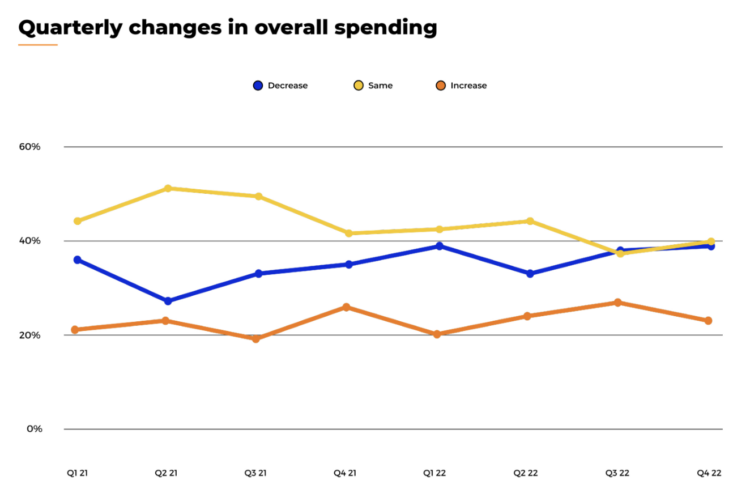
For ecommerce brands, the collision of lingering inflation and blooming recession is creating new hurdles in maintaining retail resiliency.
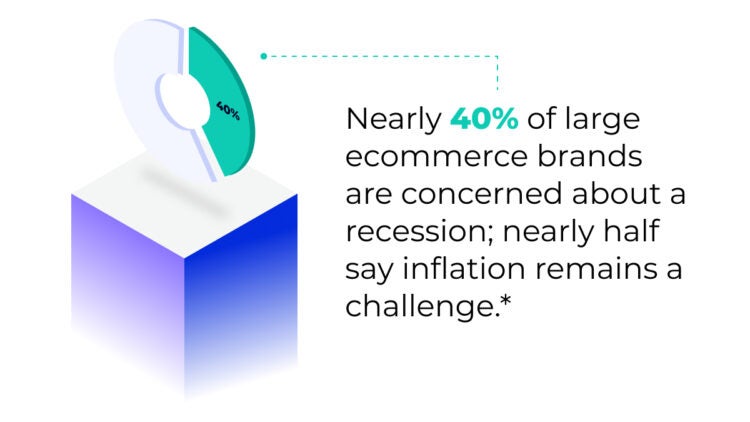
As both you and your customers plan around dollars that no longer stretch as far, understanding how these factors are impacting your key markets in different ways can help you plan tailored – and, most importantly, cost-effective – strategies.
In this article, you’ll learn:
- Which product categories are most impacted by recession and inflation
- How your brand can respond to macroeconomic factors in order to remain resilient
How the Recession is Impacting Amazon Sales
The recession is impacting ecommerce sales across the board, but Jungle Scout Cobalt data reveals that no two categories on Amazon are experiencing quite the same effects.
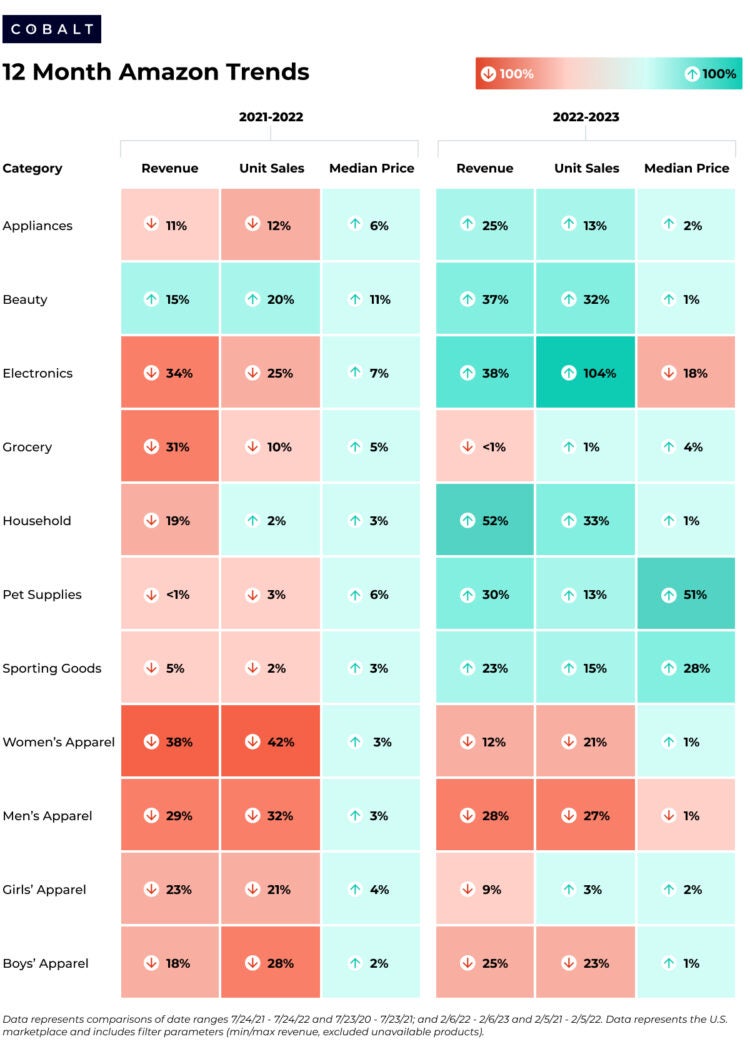
Where shoppers are cutting back spending in some areas, they’re maintaining or even increasing it in others. Read on to dive into some of the most noteworthy year-over-year sales and revenue trends on Amazon.
Largest Revenue and Sales Decline: Apparel and Jewelry
According to Consumer Trends data, 26% of consumers reported buying less clothing in the fourth quarter of 2022 than in the third. Of all the categories included in the survey, clothing had the second-largest decline in consumers’ self-reported spending. Cobalt data reflects this pattern, showing that the overall Clothing, Shoes, and Jewelry category experienced a 33% year-over-year decline in revenue and a 30% decline in sales. This is despite prices staying relatively steady, with only a 1% increase.
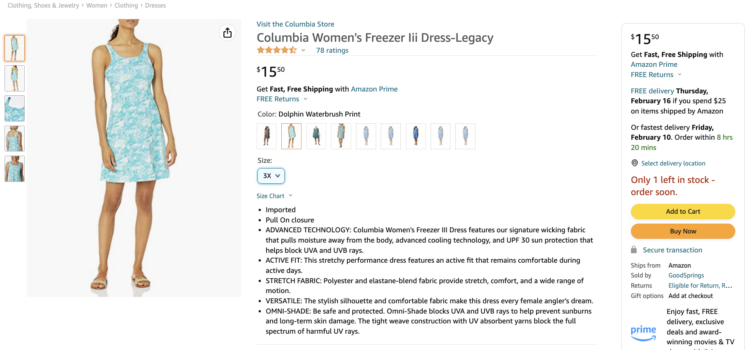
Both unit sales and revenue have declined 98% for this Columbia dress.
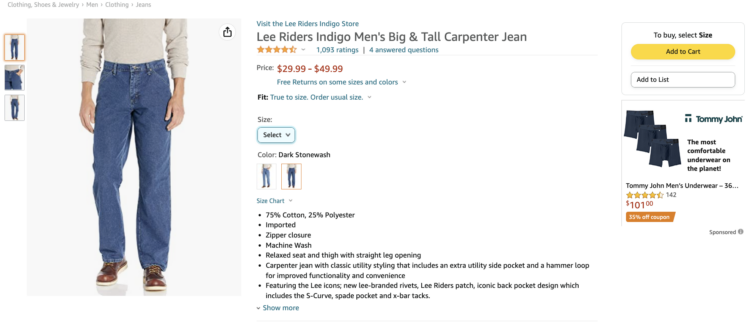
Revenue for these Lee Riders jeans is down 94%, and unit sales dropped by 95%.
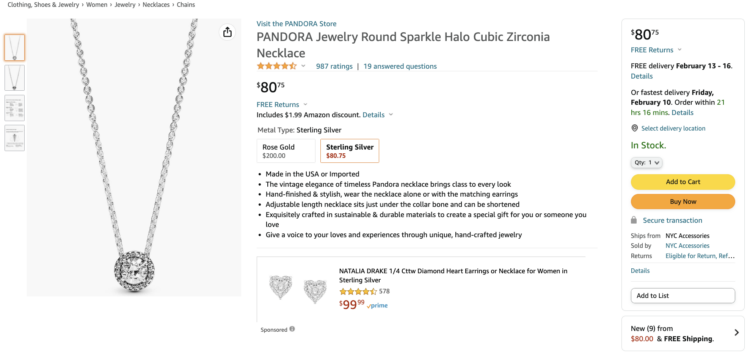
Unit sales of this Pandora necklace are down 45%, while revenue is down 49%.
Largest Revenue Growth: Health and Household
A look inside the Health & Household category shows an indication that at least some of the earliest spending cuts in response to inflation are easing up. In Q4, a majority of consumers reported their spending staying the same or increasing in Health & Household sub-categories like cleaning supplies, vitamins, and dietary supplements. This is a significant change from Q3, where more than half of consumers reported less spending in those sub-categories.
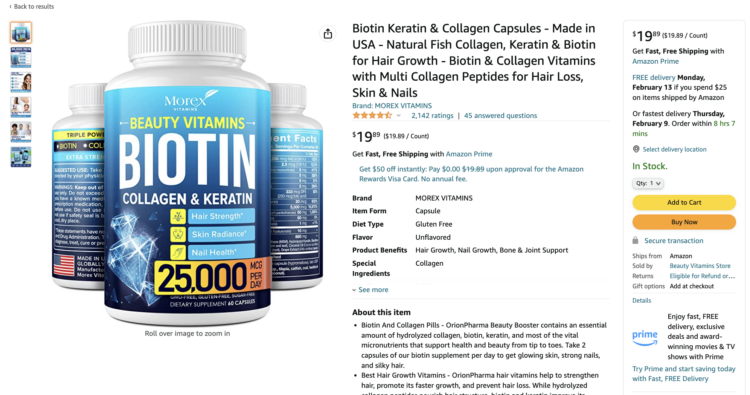
Vitamins and supplements are on the rise: unit sales and revenue for these Morex Biotin Multivitamin Gummies are both up nearly 300%.
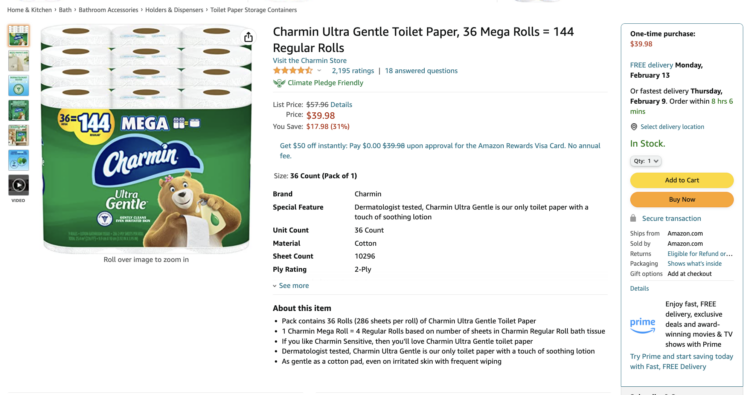
The growing popularity of bulk buying may be giving this mega pack of Charmin Ultra Gentle Toilet Paper a leg up: unit sales are up 551% and revenue is up 493%.
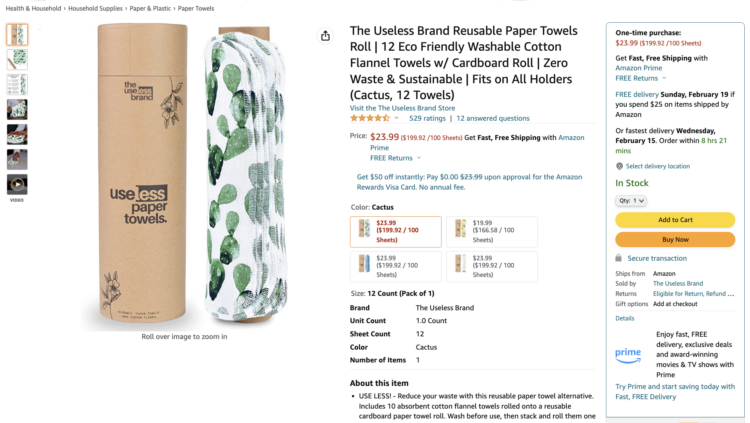
More eco-friendly, reusable, and natural Health and Household products are coming on the market, and consumers seems to be responding positively, as evidenced by this set of Useless Brand Reusable Paper Towels. In the last 12 months, revenue is up 598% and unit sales are up 540%.
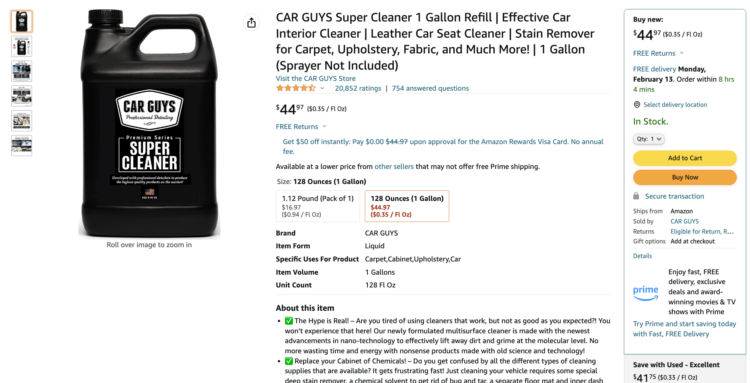
A dose of internet fame may be at least partially responsible for the major boost this Car Guys Super Cleaner has seen. As of February 2023, videos about the product have amassed over 3.4 million views on TikTok, and unit sales and revenue on Amazon are up over 5,000%.
Learn more about the power of TikTok in influencing Amazon sales.
Largest Sales Growth: Electronics
The category with the largest growth in unit sales is Electronics, with a 104% year-over-year increase. Some of this growth could be due to the fact that the Electronics category also saw the largest median price drop: A decrease of almost 20%. In the last quarter of 2022, consumers reported that finances were in their top 5 priorities for this year.
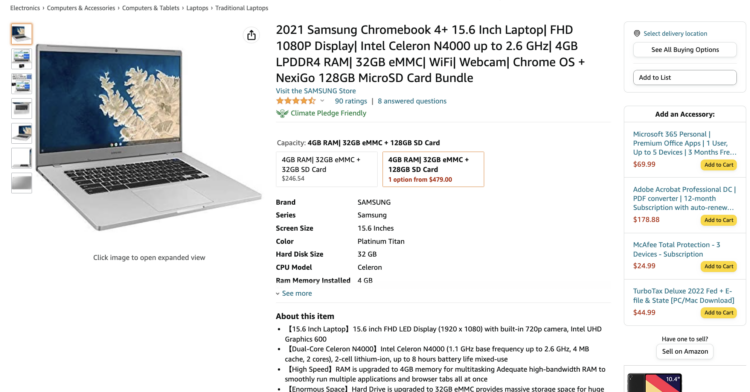
Unit sales of this Samsung Chromebook rose 292% and revenue increased 236%.
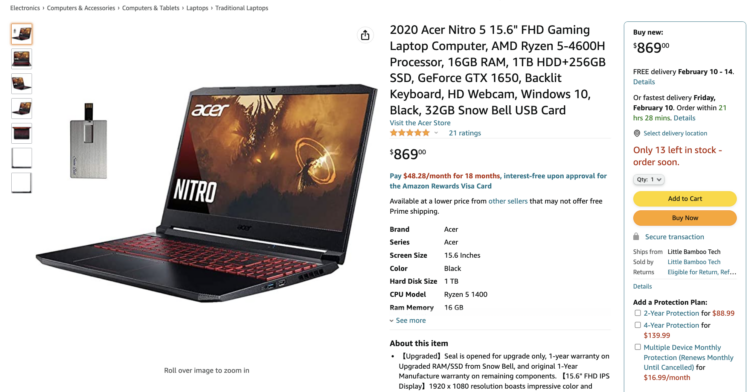
Unit sales and revenue for this Acer Nitro Gaming Laptop increased over 7,000%.
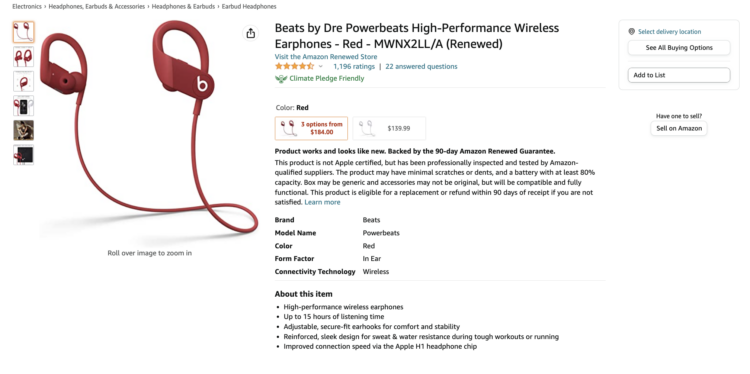
The Beats brand is clearly holding strong in the face of a recession: the unit sales for these Powerbeats Headphones increased nearly 5,000%, while revenue increased almost 8,000%.
Largest Median Price Increase: Pet Supplies
In some categories, sales and revenue have grown year-over-year despite rising prices. In a Q4 2022 Jungle Scout survey, pets surpassed spirituality, careers, and hobbies in consumers’ list of top 10 priorities for 2023. This growing focus on their pets could in part explain why sales and revenue in this category grew year-over-year despite having the highest median price increase (over 50%).
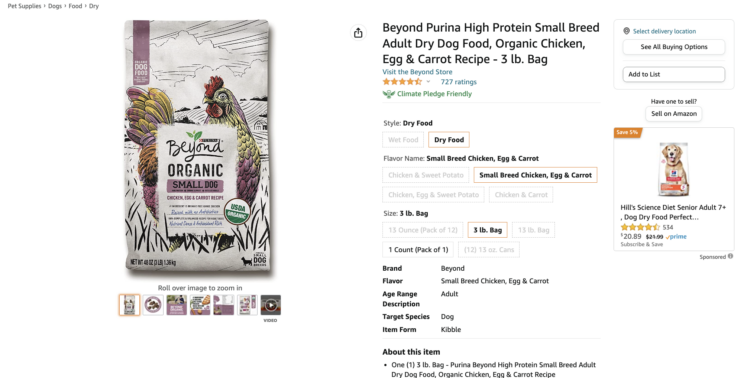
The organic and natural trend is clearly spreading to consumers’ furriest family members as well. Unit sales of this Purina Beyond Organic Dog Food grew over 3,000% while revenue increased nearly 5,000%.
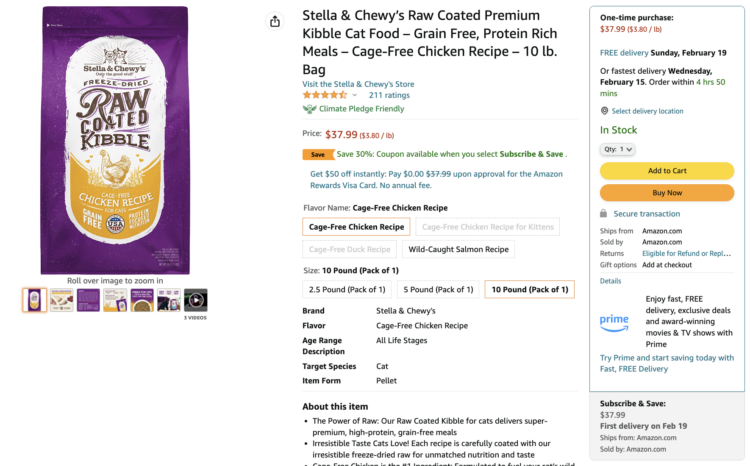
And unit sales of this Stella & Chewy’s Raw-Coated Premium Kibble Cat Food are up 670%, while revenue is up 355%.
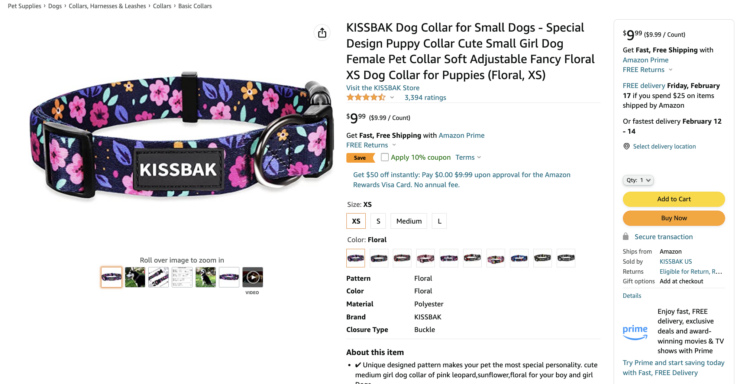
It’s not just about the kibble, though: revenue and sales for this Kissbak Dog Collar have also grown, by 446% and 457% respectively.
6 Strategies to Respond to a Recession and Inflation
While the recession is impacting eccomerce on a global scale, it’s affecting each industry differently. As a result, brands of all sizes need to adopt custom strategies to respond to the impact of economic factors that are changing the efficiency of their operations and the way their customers shop. Here are 3 guiding principles to help your brand stay resilient during a recession.
1. Reduce time and cost
The first strategy many ecommerce brands jump to when preparing for and reacting to a recession is to trim overhead wherever possible while still maintaining product and service quality. By reducing the cost associated with everyday workflows, you can help to fortify your brand against a potential loss in sales as consumers shop differently.
Embracing technology is a major boon to this effort, as it can help you automate certain tasks – like advertising campaign management – so that your team has extra bandwidth to stay strategically nimble. Particularly for advertising, automation can lead to direct cost reductions by optimizing campaigns to drive more sales with less spend, putting more money back into your advertising budget without requiring net-new investment.
2. Reinvest in your brand
Reduction is an effective way to react to the challenges posed by a recession, but the shakeup that changing shopping habits creates in the market can also open up new opportunities for your brand. In order to jump on those opportunities, you should reinvest in areas that will optimize your current strategies and build an even stronger foundation for your brand into the future.
During a recession, the right revinestments can help you grow market share, seize chances to best your competition, and even penetrate new customer segments. This can include allocating more budget to certain promotional channels, building additional paid campaigns, targeting new keywords, investing more time in organic marketing, and more.
Determining worthwhile investments for your brand during a recession can be an intimidating task. What’s right for your brand will depend heavily on your specific marketplaces, product offerings, competitors, and more. Defining this for your brand is made easier by analyzing performance data that lets you peek inside competitor tactics – so investing in a tool to improve market analysis can pay off handily during a recession.
3. Redistribute resources
Reinvesting in your brand during a recession doesn’t always mean net-new expenses. Often, redistributing your existing budget can lead to improved ROI and more revenue on the books. There are opportunities to do this throughout your ecommerce business – from advertising to inventory management.
A solid rule of thumb for retail resiliency is to ensure that 80% of your brand’s profit comes from 20% of your product catalog. What consumers are willing to buy (and at what price point) shifts during a recession, so maintaining this balance becomes both more important and more difficult.
Shift resources to your best-selling products to ensure you stay visible, and reassess your advertising campaigns to suss out which have the most direct impact on your revenue. Pulling back on new customer acquisition and brand defense campaigns and instead focusing on customer retention and new keyword targets, for example, could have a more immediate positive impact on overall sales.
Get 20 more tips for reducing costs, reinvesting in your brand, and redistributing your budget during a recession by downloading Navigating a Recession: Strategies for Cutting Costs and Smart Investments for Ecommerce Brands.
4. Increase organic marketing
Advertising competition on Amazon and other channels remains strong, which has steadily driven ad spend up and return on ad spend (RoAS) down. As you adjust marketing budgets, increase focus on your brand’s organic presence.
Social media is highly influential on consumer purchase decisions. Almost 70% of consumers start their product searches on social media, and nearly half (48%) read social media comments to learn what’s being said about a brand.
Video can be a huge organic win for ecommerce brands, both on social media and on Amazon. 37% of consumers prefer brand videos over static content, and 35% have purchased a product after watching a brand’s livestream. In addition to using video on social media, you can use Amazon Live to create shoppable livestreams.
Another way to drive social media shoppers to your listings is through influencers, who can help your brand gain exposure with new audiences and stay connected with current customers. On Amazon, you can work with influencers through the Amazon Influencer Program.

5. Be strategic about price increases
Price increases are often a necessity when inflation balloons. At the same time, consumers are still shopping with tightened budgets, and Jungle Scout data shows that a majority list finances as a top 5 priority for 2023.
“Right now, a lot of sellers are lowering costs in order to maintain profitability, but I believe that cutting necessary software, tools, and even employees will do more damage than good for my business. Instead, I’m now focusing on growth more than profit. This doesn’t mean neglecting profit entirely, but it does mean that we’re willing to spend more on ads (with a higher advertising cost of sale, or ACoS) to gain additional market share in the category.” —Jake Zaratsian, Owner of Amazon brand Natural Events
Nearly 80% of consumers do research to find deals on products when shopping online. Deal-finding browser extensions and plug-ins look for the best product prices on a single channel — like the Amazon Assistant plug-in that will search all in-stock listings for the best price — or across multiple platforms and websites. The right price, deal, discount, or coupon can help you pull shoppers to your brand’s listings.
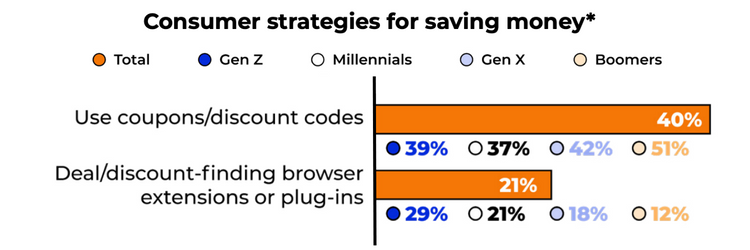
6. Revisit inventory management
Help combat shipping challenges and shifts in demand by revisiting your inventory management. Keep more inventory on hand for products that reliably drive revenue, and less (or none) for products that aren’t contributing to the bulk of your profit. This can give you a leg up on competitors, help you avoid going out of stock, increase your ROI and help you avoid unnecessary expenses ordering and stocking products that don’t move quickly.
Going out of stock is the quickest way to lose rankings and momentum — so ensuring you have extra inventory for your biggest revenue drivers can pay off in a big way.
“Many brands have lost sales to supply chain issues and delays that cause ASINs to go out of stock. To combat this for a client (1-Shoppe), we pre-ordered about a year’s worth of inventory. As a result, we have not only remained in stock but sales are up 189% year-over-year.” —Eva Hart, Ecommerce growth expert and founder of Amazon brand management agency, Treehouse Collective
The future of the recession and ecommerce
From recession and inflation to supply costs and shifts in the labor market, there are a huge variety of factors constantly impacting ecommerce brands. These factors continuously affect consumer shopping behavior and change how businesses must handle product pricing, inventory management, marketing budgets, and more.
As the recession continues to unfold, its influence over consumer and brand budgets alike will remain one of the most influential factors in ecommerce this year.
Methodology
The product data in this report is representative of the U.S. Amazon market. Market insights on Amazon products were sourced from Jungle Scout Cobalt, an industry-leading market intelligence and product insights platform powered by more than 1.8 billion Amazon data points every day. Year-over-year trends reflect data from February 6, 2022 – February 6, 2023, as compared to the period of February 5, 2021 – February 5, 2022.
Explore our Resource Library or request a custom product demo to see how Jungle Scout Cobalt can deliver a sharp competitive edge for your brand, in a recession and beyond.


 2 Comments
2 Comments
2 comments on “The Effects of Recession and Inflation on Ecommerce Businesses”
Hey
LeeAnn Whittemore
Great share!
It’s fascinating to think in this way. Although It’s pretty tough to analyze the recession as well as the inflation condition of the Country.
Thanks for the post.
Enjoy your day.
Interesting statistics, thank you! I am sure that the surprising increase in luggage sales and revenue amidst an overall decrease in the more necessary products is simply explained by low sales of this category in 2021 due to lockdowns and traveling restrictions around the world. Beauty products are not that obvious but might be influenced by people’s lifestyles during the pandemic.